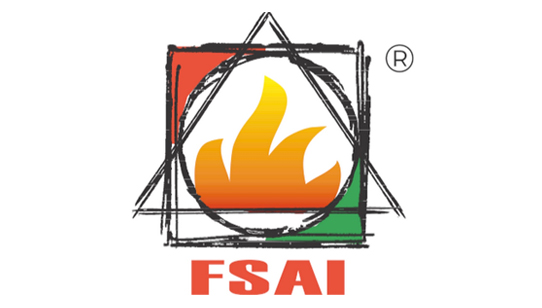Enhancing Fire Safety in the IT Industry: A Critical Need for Today’s Digital World

The IT industry is at the heart of the digital age, housing critical data and infrastructure. Fire safety in IT facilities is essential to protect valuable assets, ensure employee safety, and maintain uninterrupted operations. Advanced fire suppression systems, passive fire protection, and employee training play pivotal roles in mitigating fire risks.
The IT industry is the backbone of the modern economy, hosting vast amounts of data, critical servers, and technological infrastructure. A fire incident in an IT facility can result in catastrophic consequences, including data loss, operational downtime, and financial setbacks. Therefore, implementing robust fire safety measures is a top priority for IT companies worldwide. This article explores the unique fire safety challenges in the IT sector and provides actionable insights to address them effectively.
Fire Safety Challenges in the IT Industry
The IT industry faces several unique fire safety challenges that set it apart from other sectors:
The IT industry must comply with stringent fire safety regulations, including those outlined in the National Building Code of India and other international standards.
Essential Fire Safety Measures for IT Facilities
To address these challenges, IT companies must adopt a combination of advanced technology, passive fire protection, and employee training.
1. Advanced Fire Detection Systems
2. Clean Agent Fire Suppression Systems
Traditional water-based systems are unsuitable for IT facilities. Instead, use clean agent fire suppression systems (e.g., FM-200 or NOVEC 1230). These systems effectively extinguish fires without harming sensitive electronic equipment or leaving residue.
3. Passive Fire Protection
Implement passive fire protection measures to contain and slow the spread of fire:
Fire-Rated Walls and Ceilings:
Ensure server rooms are enclosed with fire-rated partitions.
Fire Doors and Dampers:
Install fire-resistant doors and air dampers to compartmentalize spaces.
Cable Coatings:
Use fire-retardant coatings for electrical cables to minimize fire propagation.
4. Redundant Power and Cooling Systems
Fires in IT facilities often originate from overheating or power surges. Redundant systems, such as uninterruptible power supplies (UPS) and cooling solutions, can prevent overheating and electrical malfunctions.
5. Emergency Lighting and Evacuation Signage
Ensure all IT facilities have adequate emergency lighting and clearly marked evacuation routes. This facilitates safe and efficient evacuation during emergencies.
6. Fire Extinguishers and Training
Install portable fire extinguishers designed for electrical fires (Class C). Train employees to use these extinguishers effectively.
The role of employee in fire safety
Technology alone cannot ensure fire safety. Employees must be well-trained to respond appropriately during fire emergencies.
1. Evacuation Drills:
Regularly conduct fire drills to familiarize employees with evacuation routes and procedures.
2. Basic Firefighting Skills:
Train employees to use fire extinguishers and recognize early signs of fire hazards.
3. Role Assignments:
Designate fire marshals within teams who are responsible for guiding employees and ensuring everyone evacuates safely.
4. Training on New Systems:
Whenever new fire safety systems are installed, provide employees with comprehensive training on their operation and maintenance.
REGULATORY COMPLAINCE FOR IT FIRE SAFETY
Adhering to fire safety regulations is non-negotiable for IT facilities. In India, compliance with the National Building Code (NBC) and fire safety norms prescribed by local fire departments is mandatory. Key aspects include:
Fire Audits:
Conduct regular fire safety audits to identify vulnerabilities and ensure compliance.
Equipment Maintenance:
Maintain all fire safety systems, including alarms and suppression units, to ensure they function optimally.
Documentation:
Keep updated records of fire safety
inspections, training sessions, and compliance certifications.
BENEFITS OF PROACTIVE FIRE SAFETY IN THE IT INDUSTRY
1. Asset Protection:
Fire safety measures protect valuable data, equipment, and infrastructure from fire-related damage.
2. Operational Continuity:
By minimizing fire risks, IT facilities can avoid operational downtime and maintain seamless services for clients.
3. Employee Safety:
Well-trained employees and effective safety systems ensure a safe working environment.
4. Regulatory Compliance:
Meeting fire safety standards helps IT companies avoid penalties and maintain credibility.
5. Reputation Management:
A strong commitment to fire safety enhances the company's reputation and builds trust among stakeholders.
Case Studies: Learning from Incidents
1. Chennai Data Center Fire (2020)
A fire caused by an electrical fault led to significant downtime for an IT firm. The absence of clean agent suppression systems resulted in damage to critical servers. The incident highlighted the importance of adopting fire-safe solutions tailored for IT facilities.
2. Bengaluru IT Park Incident (2018)
An IT park faced a minor fire due to overheating in a server rack. Quick response by trained employees and a well-maintained clean agent suppression system prevented the situation from escalating. This case demonstrates the value of regular training and advanced systems.
FUTURE TRENDS IN IT FIRE SAFETY
1. IoT-Enabled Fire Systems:
Smart fire detection and suppression systems integrated with IoT enable real-time monitoring and faster responses.
2. AI-Driven Risk Assessment:
Artificial intelligence can analyze historical data to predict potential fire risks and suggest preventive measures.
3. Sustainable Solutions:
Eco-friendly fire suppression agents and sustainable construction materials are gaining popularity in IT facilities.
4. Enhanced Passive Fire Protection:
Innovative materials, such as fire-resistant composites, are being used to improve passive fire protection in IT environments.
CONCLUSION
Fire safety in the IT industry is not just about complianceit is a critical investment in the protection of lives, assets, and operational continuity. By adopting advanced fire safety systems, implementing passive fire protection, and ensuring employee training, IT companies can mitigate risks and maintain resilience in the face of emergencies.





.png)







